Altenburg is Thuringia’s easternmost city with a population of just over 30,000. It is best known for the card game of skat, but has much more to offer with its well-preserved city center. In this article we want to introduce you to the most beautiful Altenburg sights in more detail.
Skat
You will encounter skat at every turn in Altenburg. The production of playing cards has a long tradition here. Almost 200 years after the first mention of the card game in 1377, there is evidence of the first resident card maker. This tradition has been preserved to this day, and the playing cards from the ASS Altenburger Spielkartenfabrik are a household name for every card lover.
Initially, the Skat game was invented in 1813 by four notables, including the well-known publisher Brockhaus, who, out of a desire to experiment, created the new game from elements of Tarok and Schafkopf, which soon supplanted all other card games in terms of popularity and started its triumphal march from Altenburg through Germany and the world.
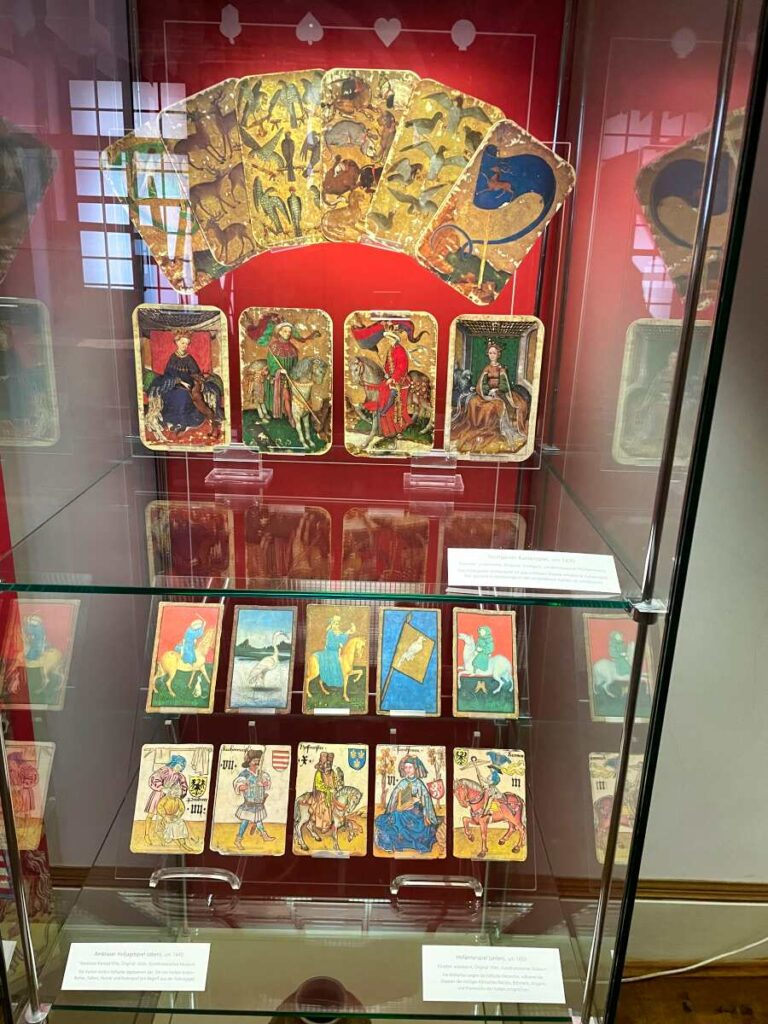
Playing card museum in the castle
In the Playing Card Museum you can learn everything about the history of cards in general and Skat in particular (Tue-Sun 9:30-17). You will get information about the history of the Altenburg card makers, the cradle of the game of Skat, the history of the Tarok, the differences between the Saxon, Wurttembergian and Bavarian card patterns, the invention of the “Black Peter” (also by an Altenburg artist), the development from instruction cards to the quartet game – and you will also learn something about the topic “eroticism on playing cards”. And of course, countless playing cards are presented in showcases, all the way back to the earliest times of the card game.
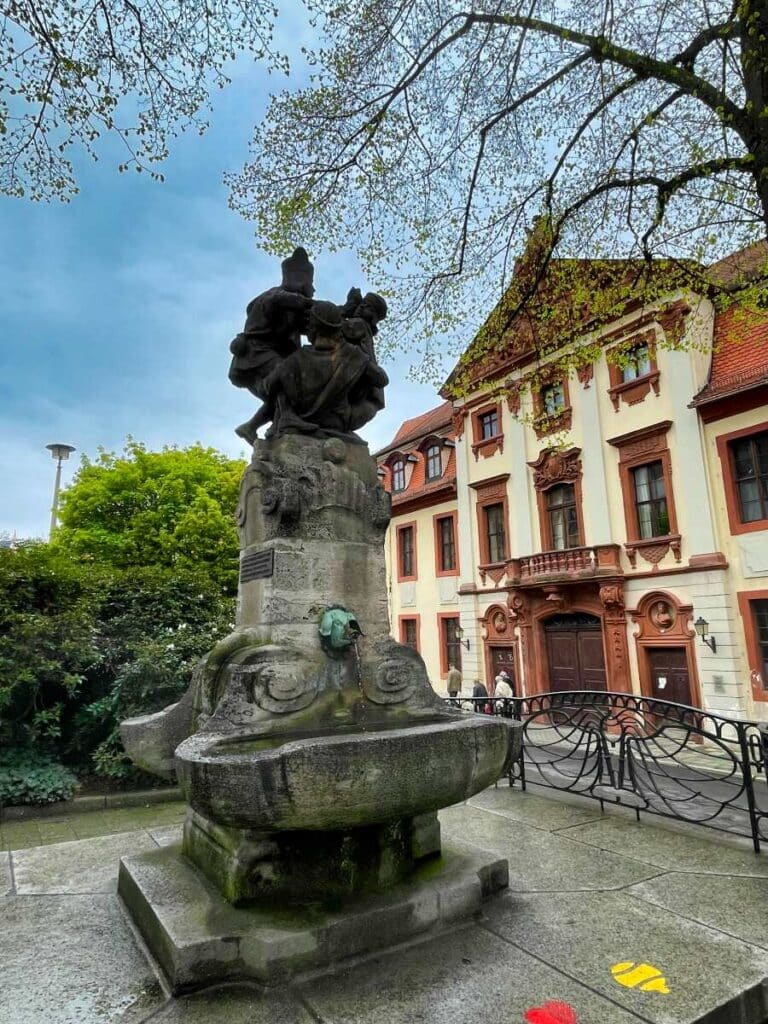
Skat fountain
The Skat Fountain, erected in 1903 on the basis of a bequest from a wealthy friend of Altenburg, stands at Markt 17. It depicts four Wenzels (peasants) who are fighting with each other for their rank in the card game. Two pigs’ heads are attached to the base, from which the fountain water flows. It is said that you have to pat the pig’s heads and baptize your cards in the well water to be lucky in the game. And it is said that there are still people who practice this ritual (although I don’t quite understand how they still want to play with the baptized cards). In any case, the Skat Fountain is one of the most unusual Altenburg sights.
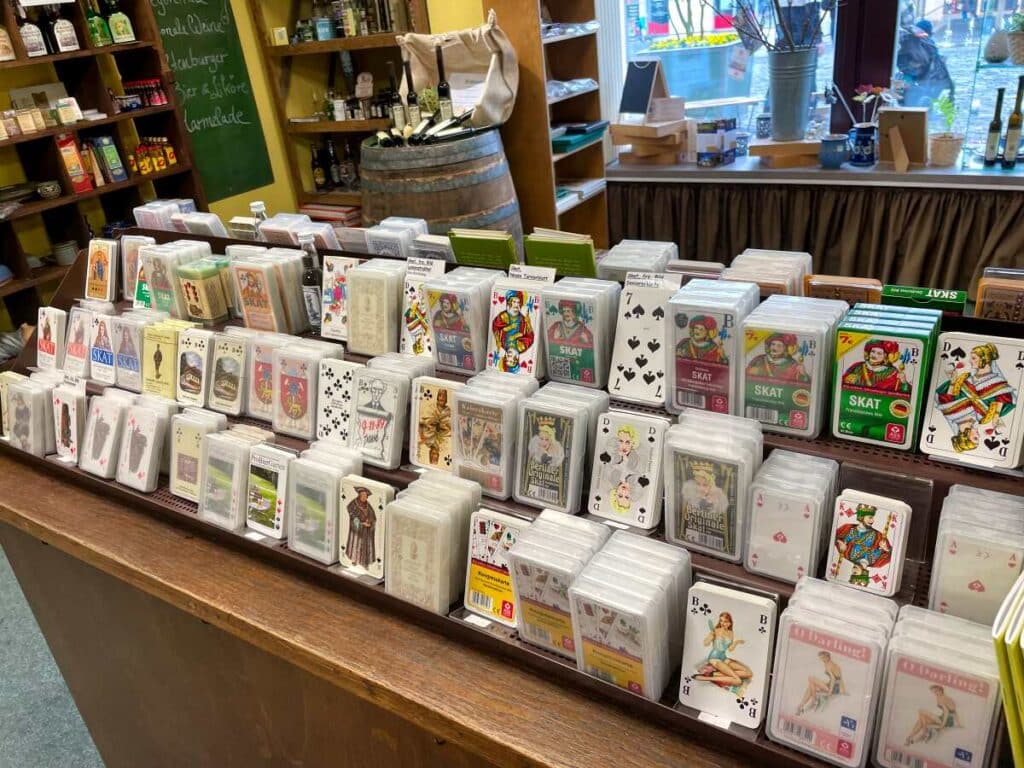
Altenburg playing card store
Directly at the market you will also find the Altenburger Spielkartenladen, according to their own statement “Germany’s largest and most beautiful playing card store”. If you look around the beautiful store, this may well be true. The store is run by Altenburger Tourismus GmbH, and the very friendly and helpful staff will give you any information you need on the subject of skat, including the playing card adventure trail.
Playing Card Adventure Trail
The Playing Card Experience Trail takes you through the history of playing card production at various stations. From April to October, you can take part in a guided tour on Wednesdays at 2 p.m. and 4 p.m. (both in German) or explore the trail on your own by following the signs scattered around the city. Alternatively, you can buy a deck of cards with all the clues at the playing card store.
German Skat Federation and International Skat Court
The German Skat Association, based at Am Markt 12, organizes and supervises the play of the 1st Bundesliga, the 2nd Bundesleagues and the regional leagues in team and individual competitions. There are even online competitions, senior and junior tournaments, cup competitions in tandem and mixed, and competitions for the blind and visually impaired. And then there is the International Skat Court, which has its headquarters in the Hotel am Roßplan 8. It watches over the observance of the skat rules and their observance by the referees. It decides on the interpretation of the skat rules, for example when it comes to questions like the following:
“After the middle hand and back hand have passed, the forehand announces the grand hand and plays out. The opponents then throw their cards together and immediately declare the game lost for the solo player with Tailor and Black because he did not bid “18”. Is Forehand allowed to play even without having bid “18” himself?”
The answer to this and other questions can be found on this website.
Skatbank Arena
Skat also gave its name to the local soccer stadium. It used to be called Leninstadion and then Waldstadion and has a capacity of 25,000 spectators, an astonishing size for a town like Altenburg. The stadium is the largest in the Free State of Thuringia! It is named after its main sponsor, a branch of VR-Bank Altenburger Land eG. It’s name: “Deutsche Skatbank”.
Museums in Altenburg
There are other very interesting museums in Altenburg besides the Playing Card Museum, all of which can be counted among the most interesting Altenburg sights.
Lindenaumuseum
First and foremost, there is the Lindenaumuseum. It is known for its outstanding collection of paintings of the Italian early Renaissance, purchased at that time by the collector Bernhard August von Lichtenau. Among the pictures is also the painting “Portrait of a distinguished woman” by Botticelli. Unfortunately, I can not tell you more, because the museum is currently closed for renovation. Since January 2020, the museum is being extensively renovated and expanded, there are always discussions about the execution of the reconstruction, according to current information, completion is not expected before 2026.
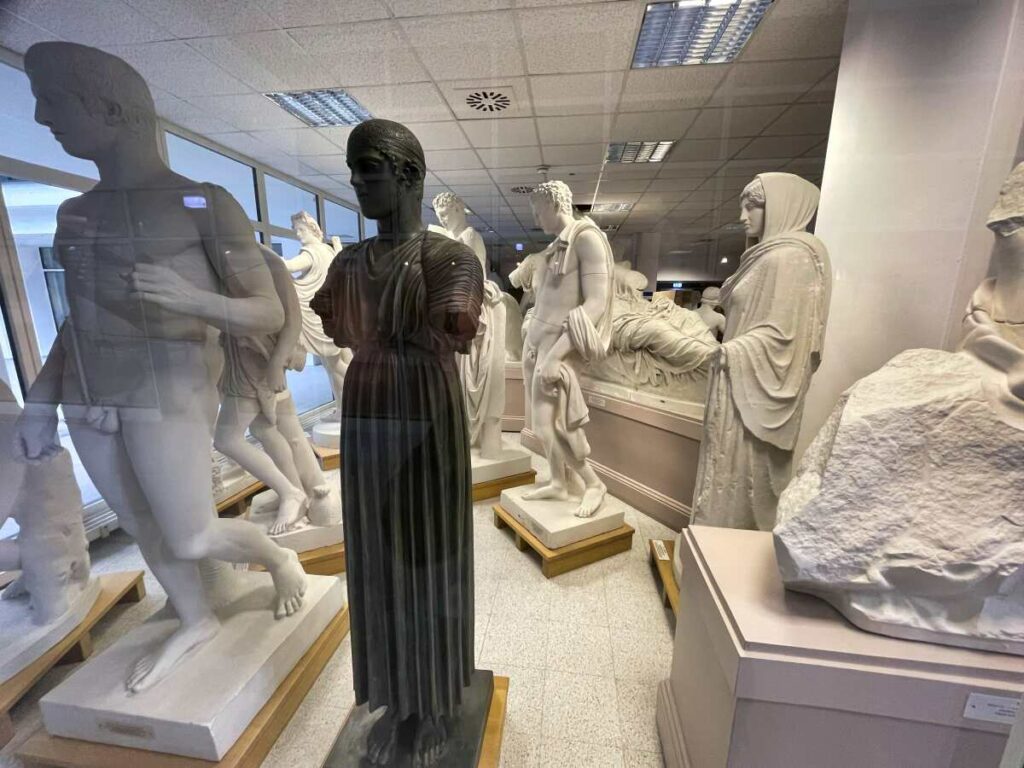
Although there is a place called “Interim Lindenau-Museum Altenburg” (Kunstgasse 1), only a few paintings and vases are presented there in one room, and exhibits from the well-known cast collection are crowded together in the other room. All the greater is the anticipation of the reopening of this excellent museum.
Naturkundliches Museum Mauritianum
In the Museum of Natural History Mauritianum (Tue-Fri 1-5pm, Sat/Sun 10am-5pm) there are exhibitions on various topics: a geological collection with finds from Altenburg and the surrounding area, an ornithological collection with birds from the homeland, South America, Africa and Australia, which was assembled as early as the 19th century, including those handed over from the collection of Alfred Brehm.
The Altenburg rat king
And there is the Altenburg Rat King, a mummified rat whose tail is knotted with that of 31 other rats. It is believed that the knotting of the tails is due to a natural clasping reflex upon contact with a foreign body. The Altenburg rat king is the world’s largest specimen.
The museum is exemplary in its efforts to bring children closer to nature in all its facets. There is a children’s college with comprehensive courses for children from preschool age to 4th grade to observe, explore and experiment. A project that should be supported by making a donation (admission to the museum is free).
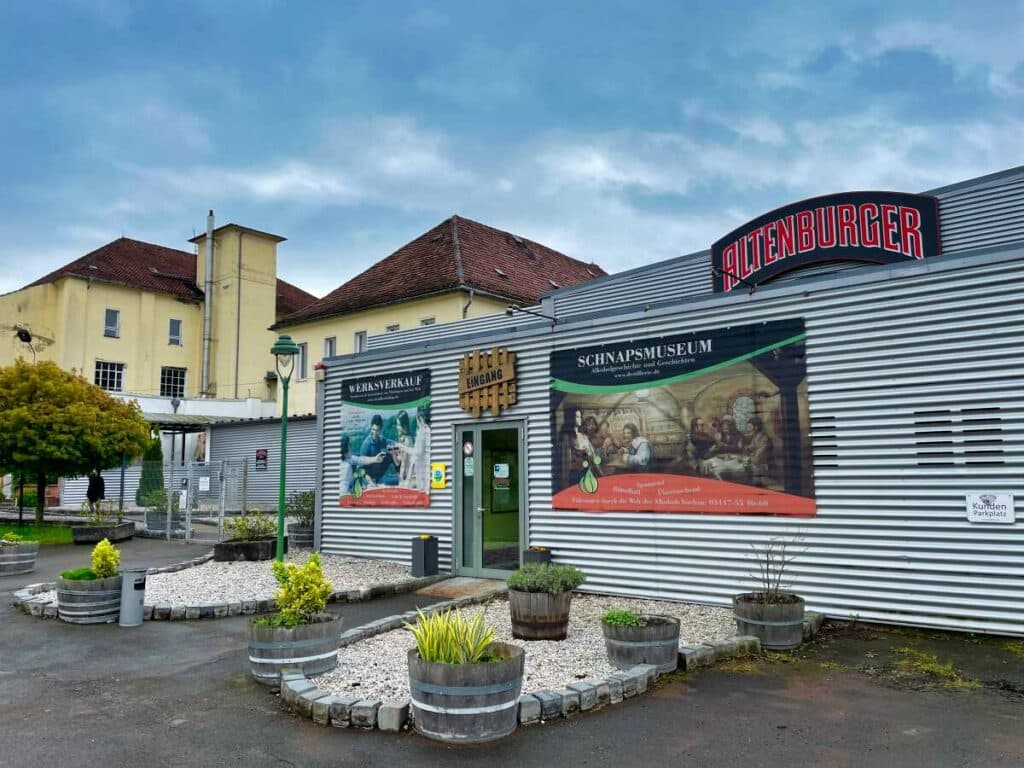
Schnapps Museum
The Schnapps Museum (Mon-Fri 11am-6pm, Sat 10am-1pm) is part of the famous Altenburg Distillery. In the small museum, you can take a tour and learn about the history of the production and consumption of alcohol in the various eras of human history. It’s all presented in a very vivid way, visitors who are used to ghost trains will enjoy this museum (and afterwards they will know what the Tasmanian Schnapps Bear is all about).

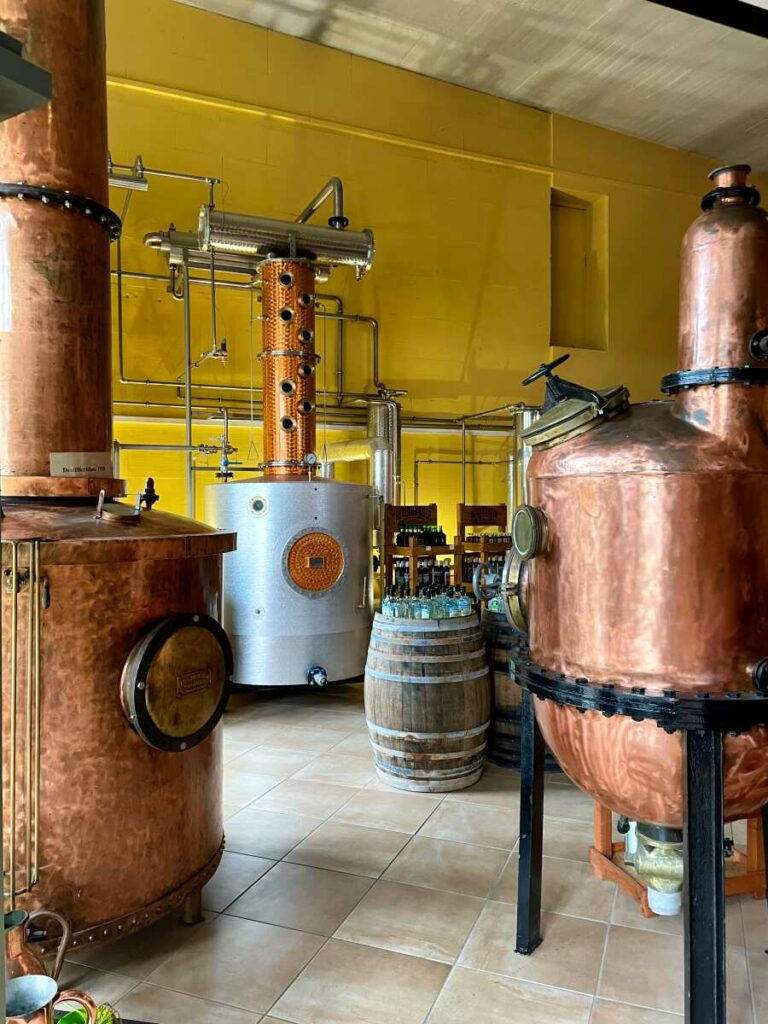
And if you’ve acquired a taste for it afterwards, you can stock up on high-proof spirits in the adjoining museum store.
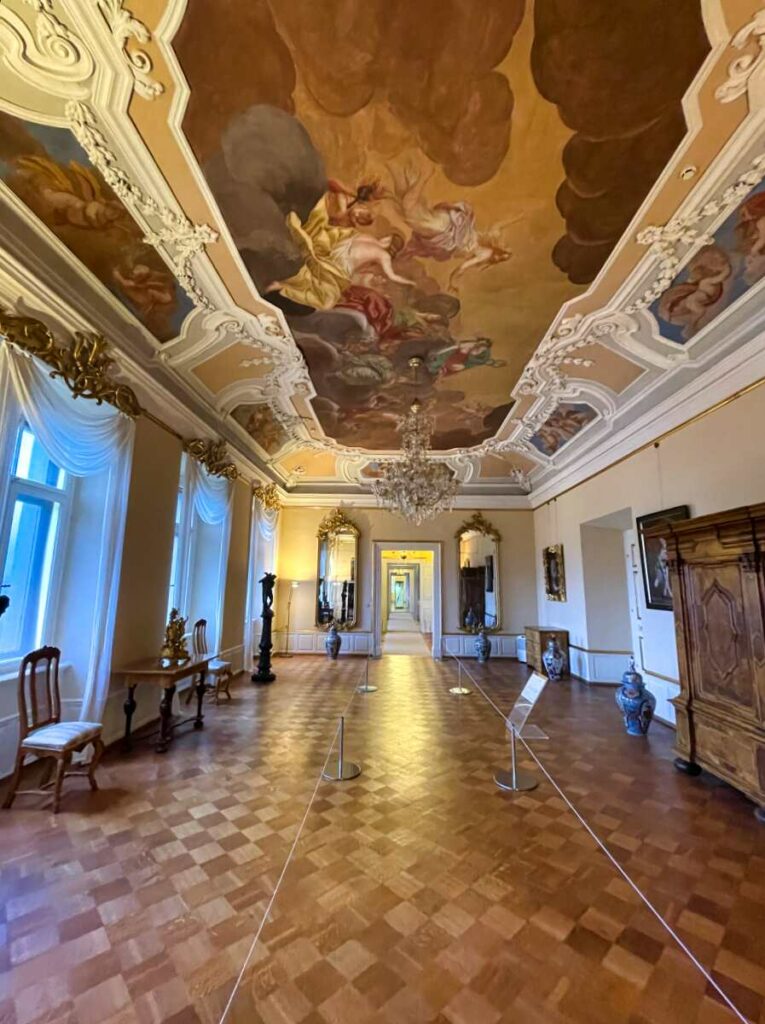
Castle Museum
In addition to the playing card museum, the castle houses a museum where you can learn about the history of the castle and its inhabitants, such as the Saxon Princes’ Robbery, in which Princes Ernst and Albrecht were kidnapped by a nobleman who wanted to extort compensation for lost goods. The coup failed and he lost his head.
You will also find a beautiful collection of porcelain from Asia and Meissen, all presented in magnificently decorated rooms, which you can see in the exhibition areas “Ducal Apartments in the 17th/18th and 19th/20th Centuries”.
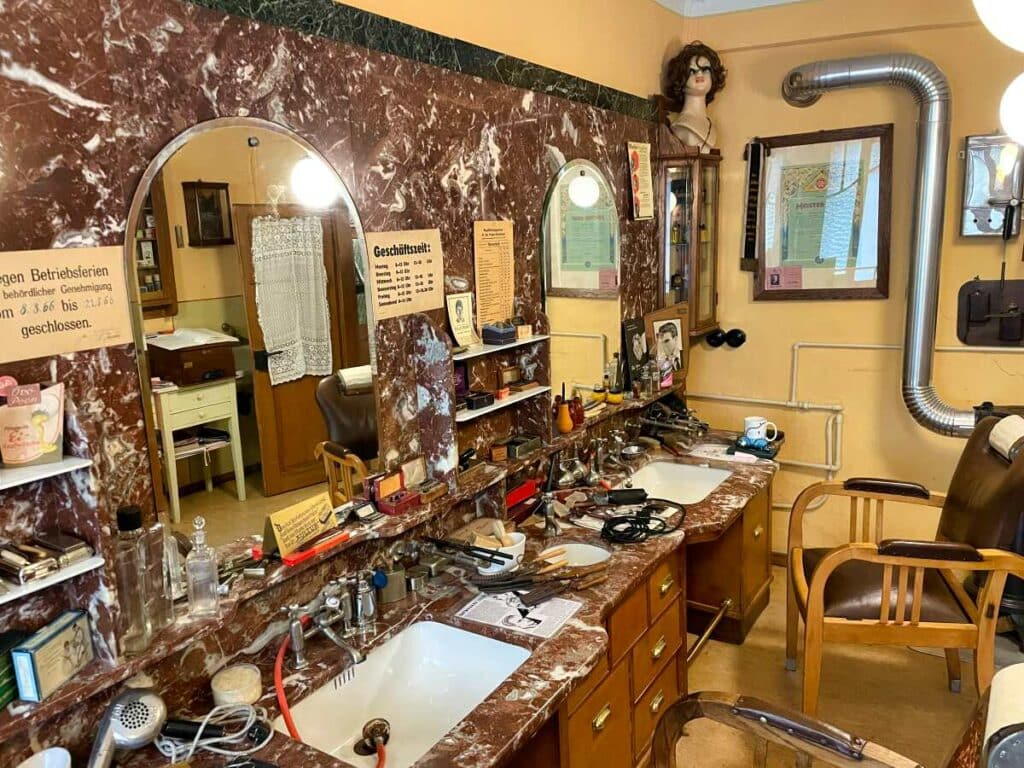
Historical hairdressing museum
The Museum of Hairdressing is a very special museum and is located in Pauritz Street. A barber had taken over a hair salon from the twenties and retired in 1966. He closed the store, handed over the key, and the salon fell into a slumber for decades until it was reopened to the public in 2010 almost unchanged. A visit to the museum means pure nostalgia, because the men’s salon and the ladies’ salon are still completely furnished in the style of the 1920s (with Italian marble!).
During a guided tour you will learn what a curl squeezer is, you will be explained the operation of all the equipment, including those that used to be used for dental “treatments” by the barber. Did you know that the wide leather straps attached to the barber’s chair are used to strip razors and are only used in American movies to sharpen knives? Or that after the work was done, the barber could turn the seat cushion of the barber chair by 180 ° with a handle, so that the next customer could enjoy a cool and not warmed up sear by the previous one? Wonderful!
Other Altenburg sights
Even beyond Skat and museums there is a lot to experience in Altenburg. Here we present you more interesting Altenburg sights.
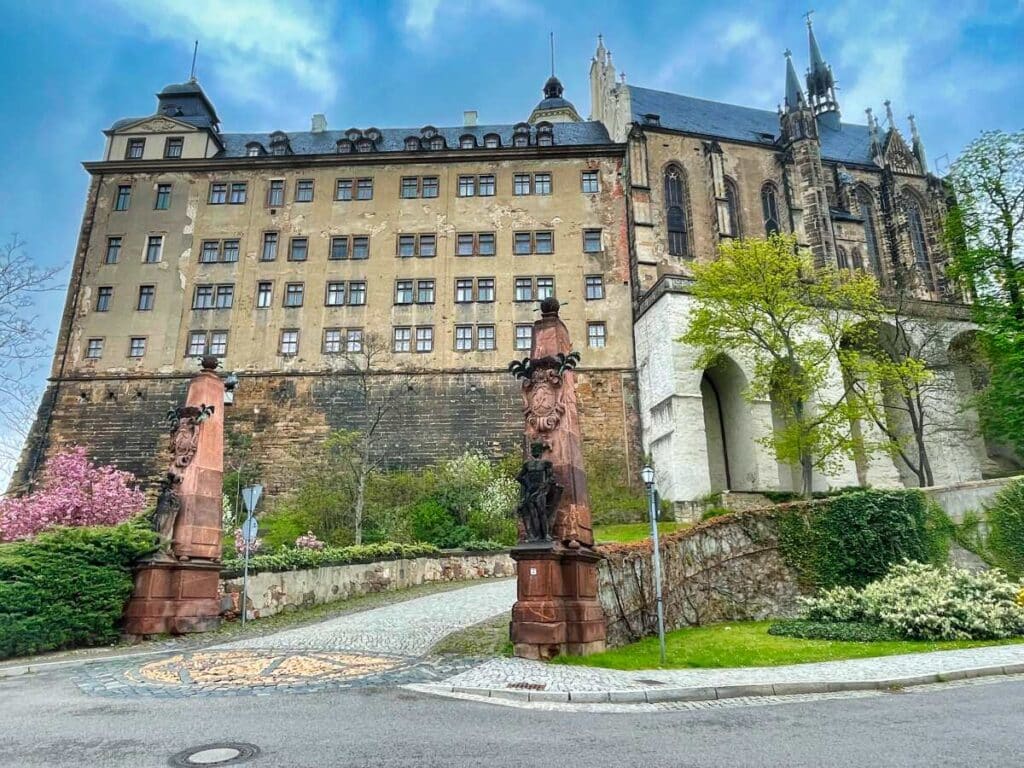
Castle with park
The castle and its park are worth seeing even without a visit to one of the museums. The castle is situated in an elevated position above the city on a porphyry rock and offers a great view, especially from the Gothic castle church. The original building dates back to 976, after which the castle was frequently rebuilt. It functioned temporarily as an imperial palace and then as the residence of the Wettin dynasty. Various buildings from different eras are grouped around the inner courtyard, and if you want to get an overview of the castle complex, but also beautiful views of the city, you should climb the Hausmanns Tower in the inner courtyard (Tues-Sun 9:30-17).
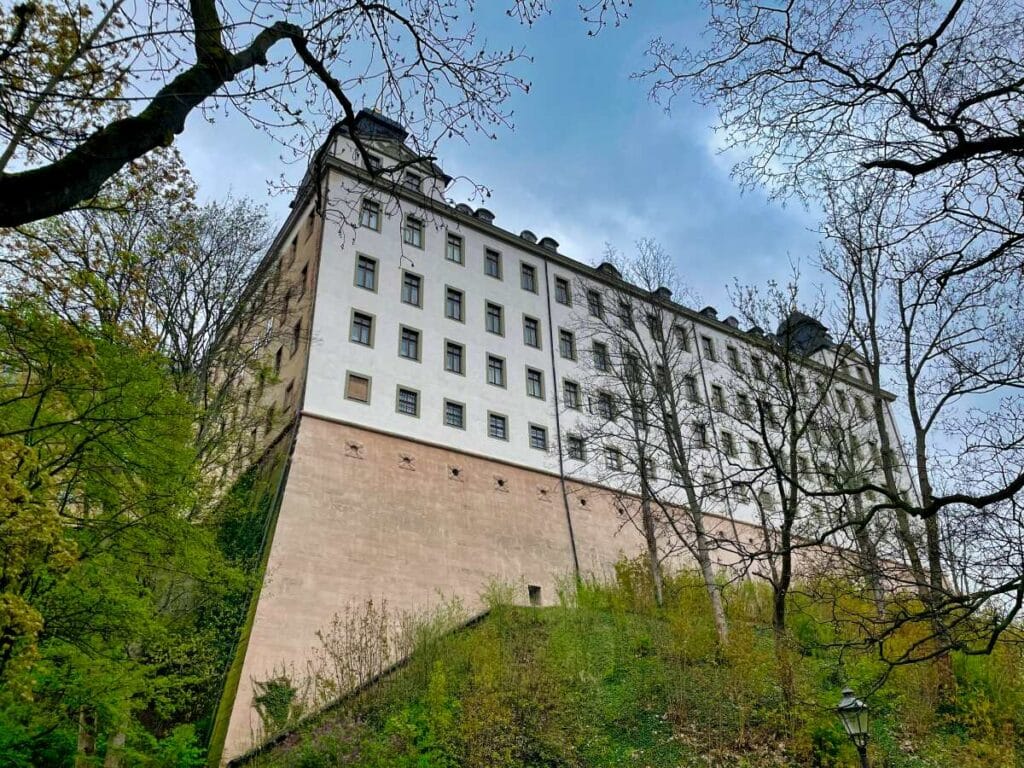
Adjacent to the palace is a spacious park laid out as a Renaissance garden with magnificent old trees. In the park there are several beautiful buildings such as the already mentioned Mauritianum and the Lindenau Museum, but also the Duchess Agnes Memorial Church, the Orangery or the Tea House built between 1706 and 1712.
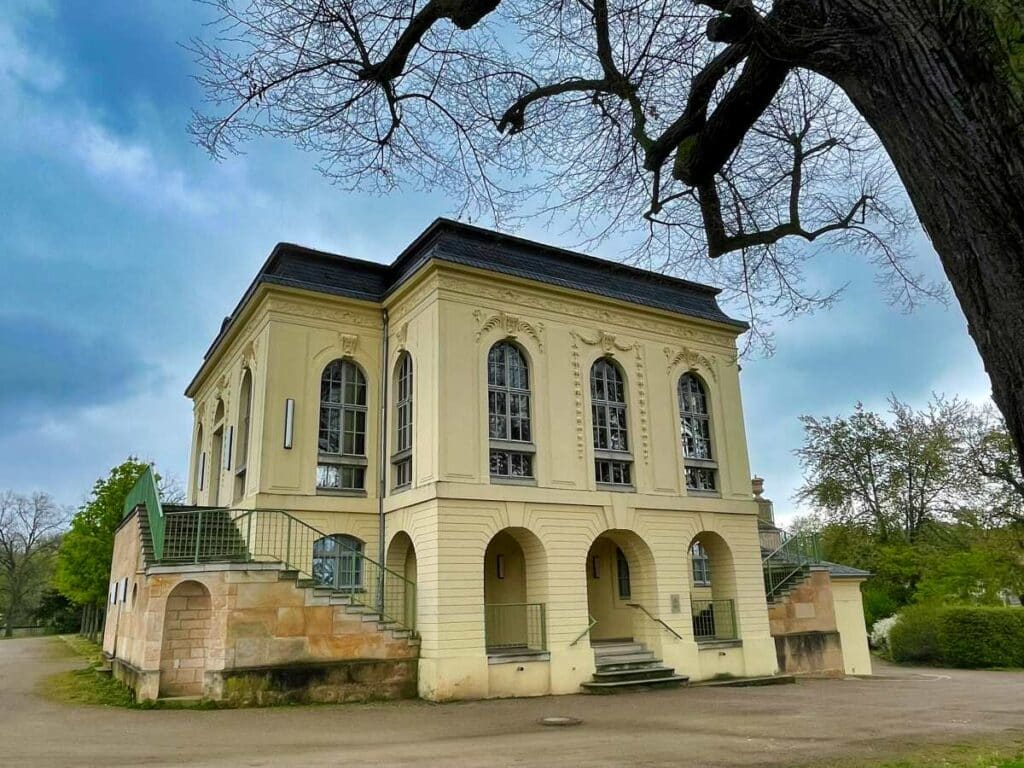
A support association founded specifically for the purpose of preserving the teahouse organizes regular music and cabaret events there.
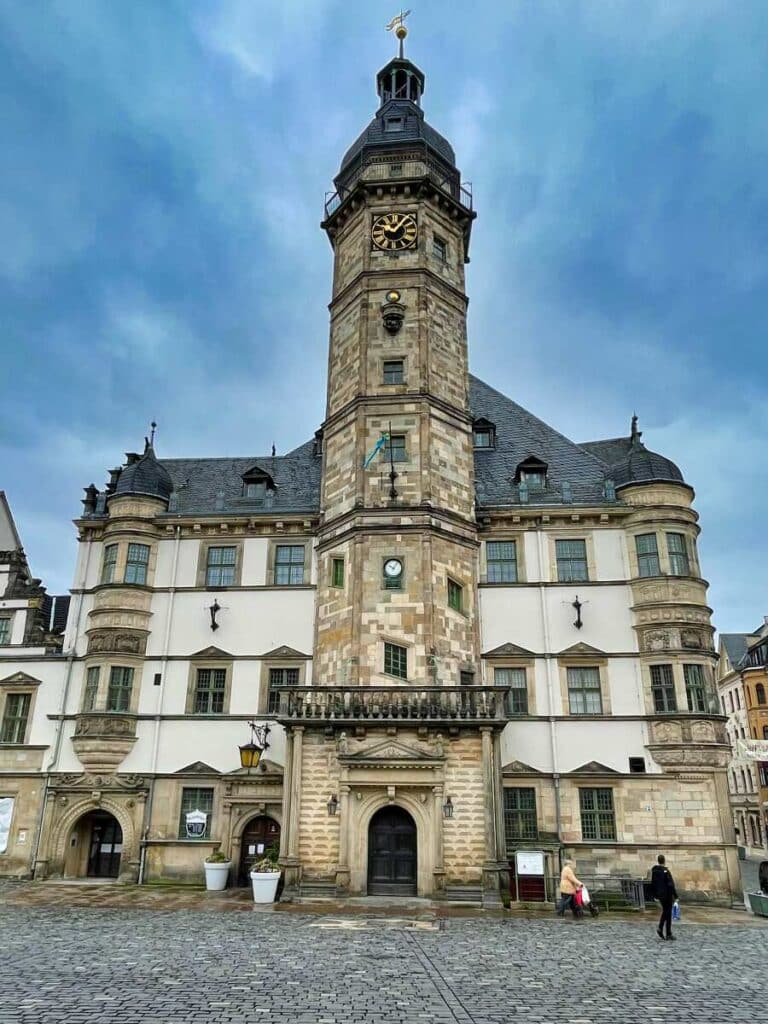
Market square with city hall
If you want to take a walk through the old town of Altenburg, you should start it at the Market Square. It is the central square in Altenburg and is dominated by the magnificent Renaissance town hall.
The view stretches from one end of the market square at the height of the tourist info to the red brick Brüderkirche (Brother’s Church) at the other end. I recommend you to visit the market on the weekly market days, when many regional products are offered, including the excellent Altenburger goat cheese, which some of you surely know from German supermarkets (Wed 8-17, Sat 8-12).
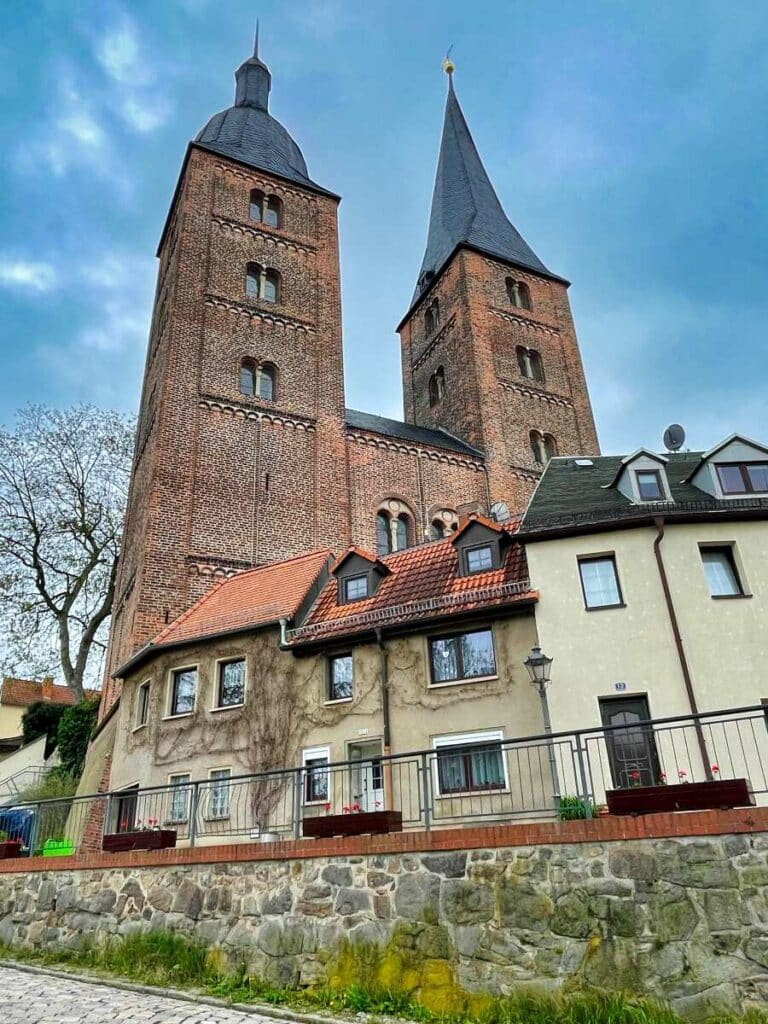
Red Spires (Rote Spitzen)
It was the German Emperor Barbarossa who allegedly donated the Augustinian monastery, whose two towers (one pointed and one curved) are still preserved as the remains of St. Mary’s Church, which belonged to the monastery. They are made of red brick, perhaps as a reminiscence of the emperor’s beard color, as some suggest? There are also other remains of the former monastery: the foundations, a porch with a round-arched portal and archaeological excavation areas. You can visit the Red Spires, which have become the emblem of Altenburg, from May to October, always from Friday to Sunday between 1 and 4:30 pm.
Churches in Altenburg
Altenburg can boast of several beautiful churches. The oldest church is St. Bartholomäi with Romanesque components. St. Mary’s Church has red spires. The Brüderkirche stands at the end of the market. In the castle park you will find the Duchess Agnes Memorial Church, which was built at the beginning of the 19th century, just like the Brüderkirche.
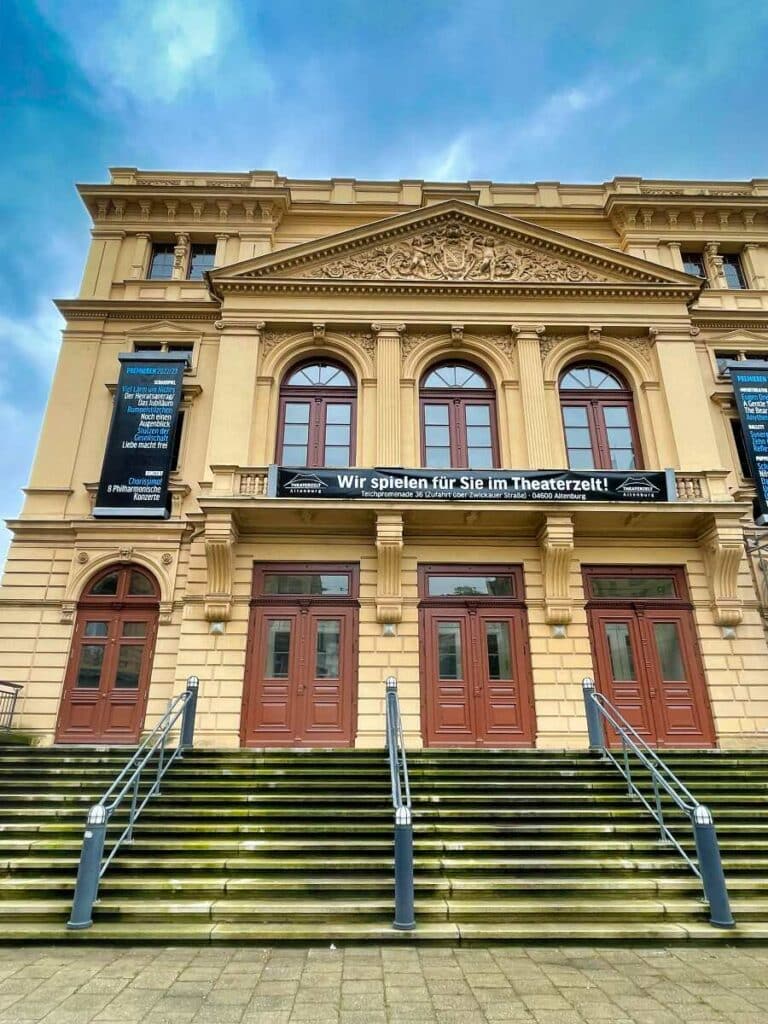
Theater
The theater, built in 1870, is located opposite the entrance to the castle. It is a multi-genre theater (musical theater, ballet, drama, puppet theater, concerts) with a varied program, which is currently being renovated and therefore gives its performances in the theater tent on the pond promenade.
Altenburg trips to the countryside
Botanical Garden
Altenburg has had a beautiful botanical garden since 1928 (Wed-Fri 10 a.m.-4 p.m., Sat/Sun 10 a.m.-5 p.m.), which was closed in 2003 and reopened in 2006 by a private association. It is intended for recreation and relaxation and at the same time for research, teaching and further education. Cultural events are also held there.
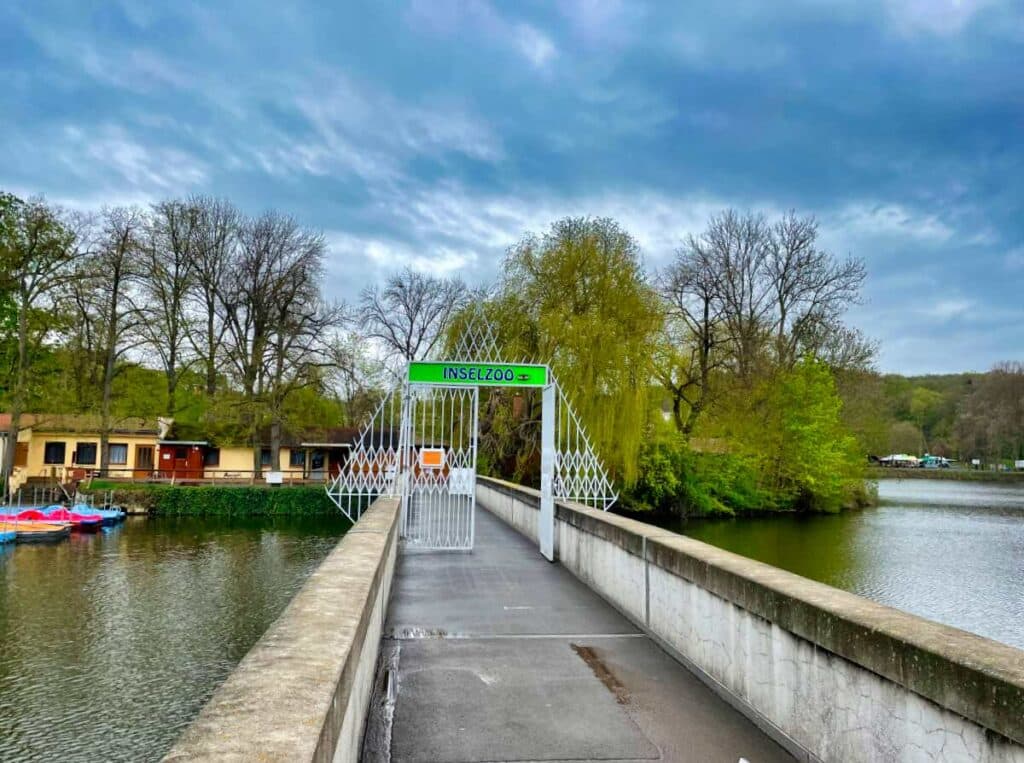
Großer Teich (big pond) and island zoo
South of the Old Town lay the Großer Teich and the Big Pond, which is very suitable for walks and ideal if you need a break after visiting the Altenburg sights. In the middle of the Great Pond there is a small island where the Island Zoo (daily 8 am – 6 pm) is located (the only zoo in Western Europe that is located on an island!). There you can marvel at nearly 90 different species of animals. There is also a petting zoo, so especially children will enjoy a visit to the zoo – or a ride on the rowboat or pedal boat that you can rent next to the zoo entrance to go on a great ride across the Großer Teich.
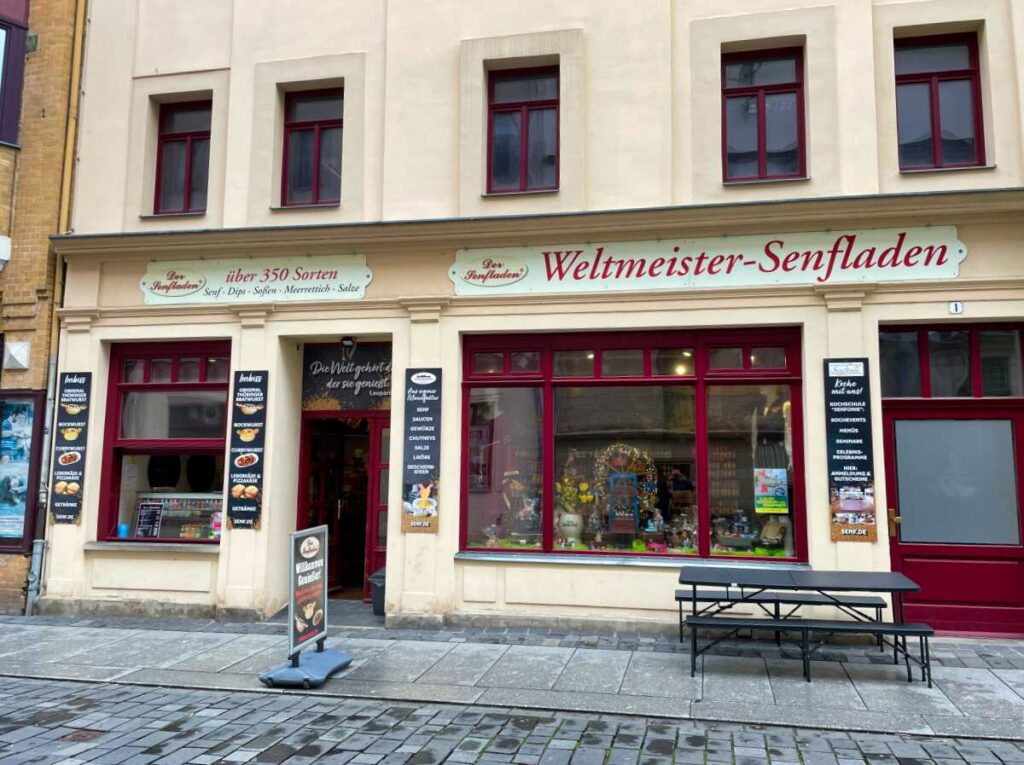
Shopping tip mustard store
In the city center near the market square (Moritzstr. 1) you will find the “Weltmeister Senfladen”. You can find more than 500 mustard products, dips and sauces, take part in factory tours and cooking classes – and create your own mustard varieties at the “Gib deinen Senf dazu” seminar.
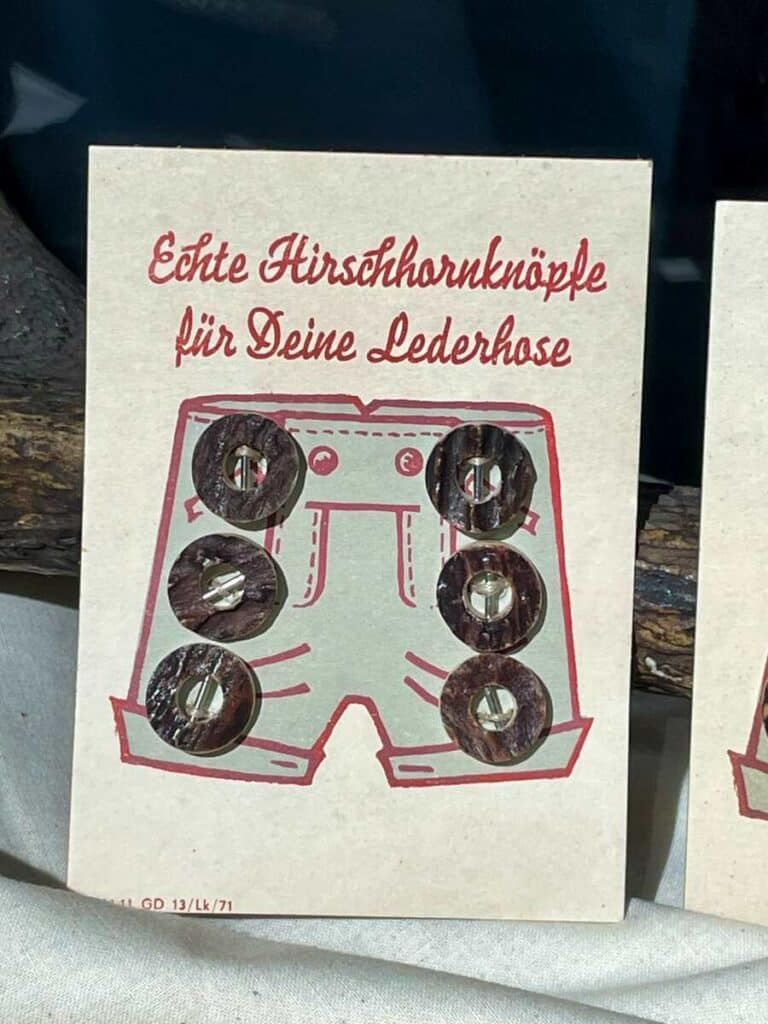
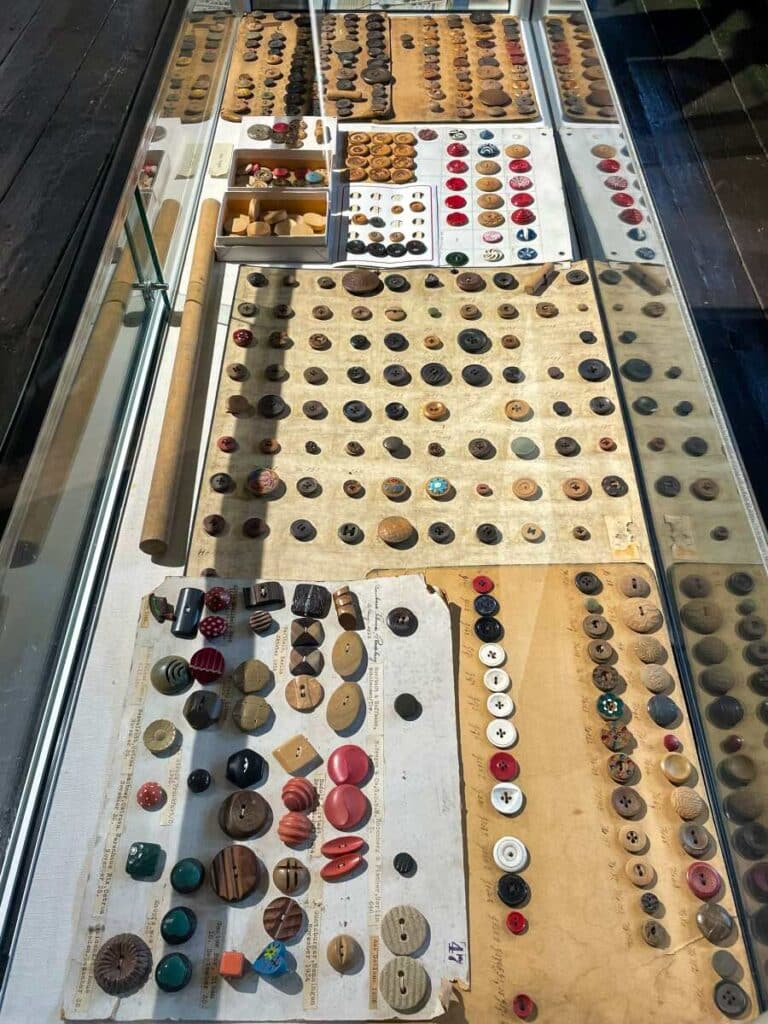
Schmölln
Schmölln is located a few kilometers south of Altenburg. If you drive to Schmölln, you will see a sign on the outskirts of the town that says “Knopf- und Mutzbratenstadt”.
The term button city (Knopfstadt) goes back to the long tradition of button making. In the Button and Regional Museum (Sat/Sun 1-5 p.m., Wed 9 a.m.-1 p.m.), you can learn everything you need to know about the history of the button industry in Schmölln: that the first buttons were made from the fruit of the South American stone nut, which was brought back by returning ships as ballast and turned out to be a suitable raw material, and how the buttons were then made from animal horn and wood and finally from plastic, which then also led to the decline of the Schmölln button industry. Of the former 29 button factories, only one still produces blanks for buttons today.
But why is Schmölln called “Mutzbratenstadt”? The Mutzbraten is a roast made from pork and cooked over birch wood (be sure to try it, it is offered at many festivals!). It could be proved already in 1795 in Schmölln. Schmölln even has a patent for the “Original Schmöllner Mutzbraten”! Even better: The ultimate and for all members binding instruction for the production of the roast comes from the “Original Schmöllner Mutzbratenschutzverband”!
The Mutz does not even exist, it is the counterpart to the Bavarian Wolpertinger, so to speak the Altenburg edition of the egg-laying lizard.
How did you like the article about Altenburg sights? Let us know and write us a comment!

